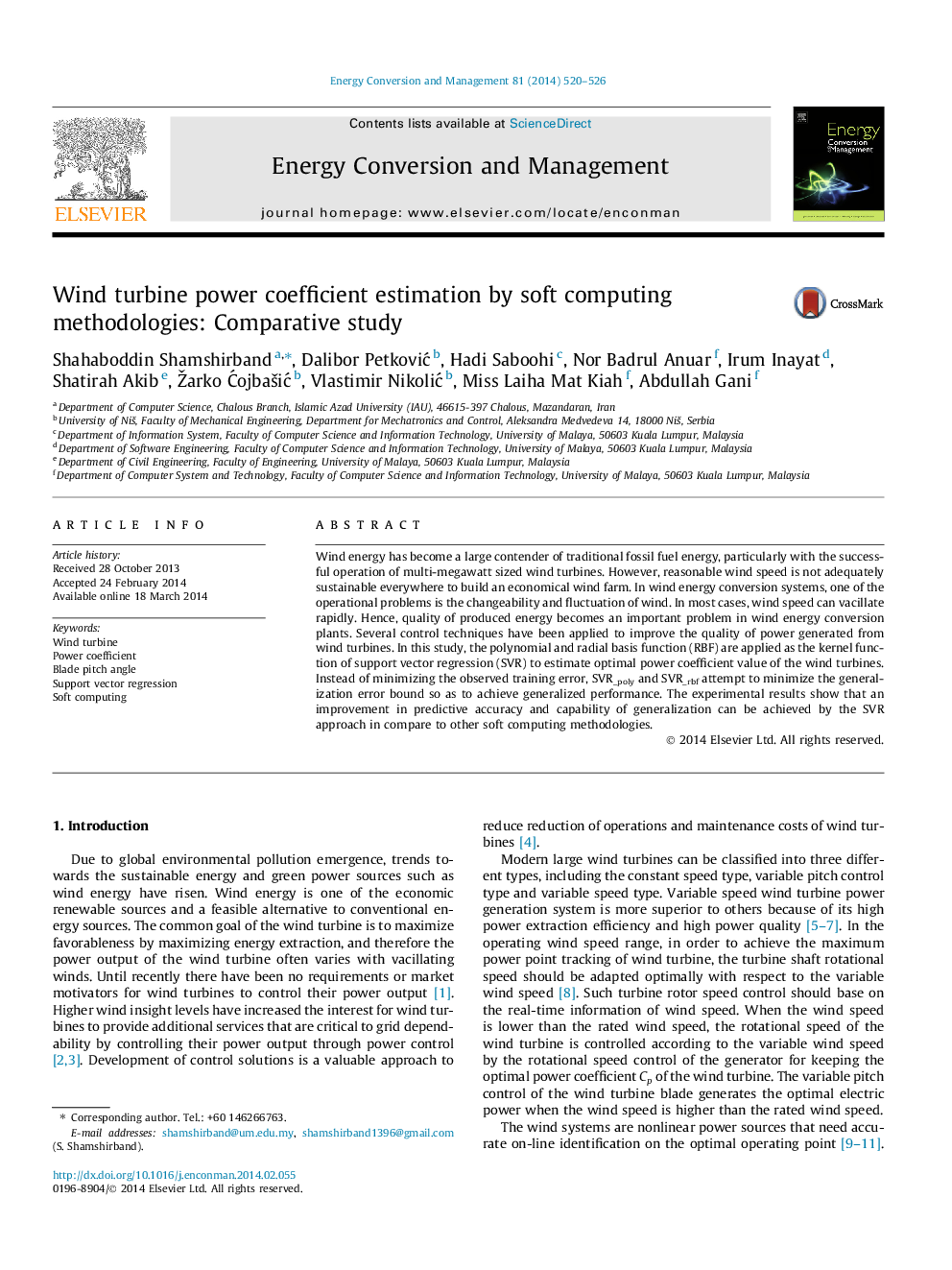| Article ID | Journal | Published Year | Pages | File Type |
|---|---|---|---|---|
| 763968 | Energy Conversion and Management | 2014 | 7 Pages |
•Variable speed operation of wind turbine to increase power generation.•Changeability and fluctuation of wind has to be accounted.•To build an effective prediction model of wind turbine power coefficient.•The impact of the variation in the blade pitch angle and tip speed ratio.•Support vector regression methodology application as predictive methodology.
Wind energy has become a large contender of traditional fossil fuel energy, particularly with the successful operation of multi-megawatt sized wind turbines. However, reasonable wind speed is not adequately sustainable everywhere to build an economical wind farm. In wind energy conversion systems, one of the operational problems is the changeability and fluctuation of wind. In most cases, wind speed can vacillate rapidly. Hence, quality of produced energy becomes an important problem in wind energy conversion plants. Several control techniques have been applied to improve the quality of power generated from wind turbines. In this study, the polynomial and radial basis function (RBF) are applied as the kernel function of support vector regression (SVR) to estimate optimal power coefficient value of the wind turbines. Instead of minimizing the observed training error, SVR_poly and SVR_rbf attempt to minimize the generalization error bound so as to achieve generalized performance. The experimental results show that an improvement in predictive accuracy and capability of generalization can be achieved by the SVR approach in compare to other soft computing methodologies.
